How to Manage Negative Customer Reviews and Complaints Online
Table of Content
“Don’t bring your car to this mechanic” or “I’d rather not buy any clothes on this website, they are of a bad quality, and return management is awful ”. I’m pretty sure many people have already heard or read these kinds of comments, whether online or from someone close.
Customers have more and more opportunities to speak out and give feedback which has increased the importance of customer ratings over the last years. As an e-commerce company, reviews from customers can be beneficial, and at the same time, they pose a threat to your brand reputation and success. Besides, reviews became crucial in the purchase decision process: 93% of consumers say that online reviews influenced their purchase decisions.
The world of online reviews
Do you know what was the first online review posted on the Internet?... Well, we don’t either. What we do know instead, is that the first online review websites were created at the end of the 20th century: deja.com, Epinions, and rateitall.com. Apart from not existing anymore, these 3 websites also have in common the fact they are the pioneers of online reviewing. Parents of Yelp, Amazon, Tripadvisor, and by extension Google and social media.
Talking about Amazon, the world’s largest e-commerce company was one of the first to use online reviews as a marketing and sales tool. When competitors chose to show only good reviews of their products, Amazon chose to show good and bad reviews. And not only allow people to see the reviews but also use them for ranking and searching engine, and putting them on the top of the product page.
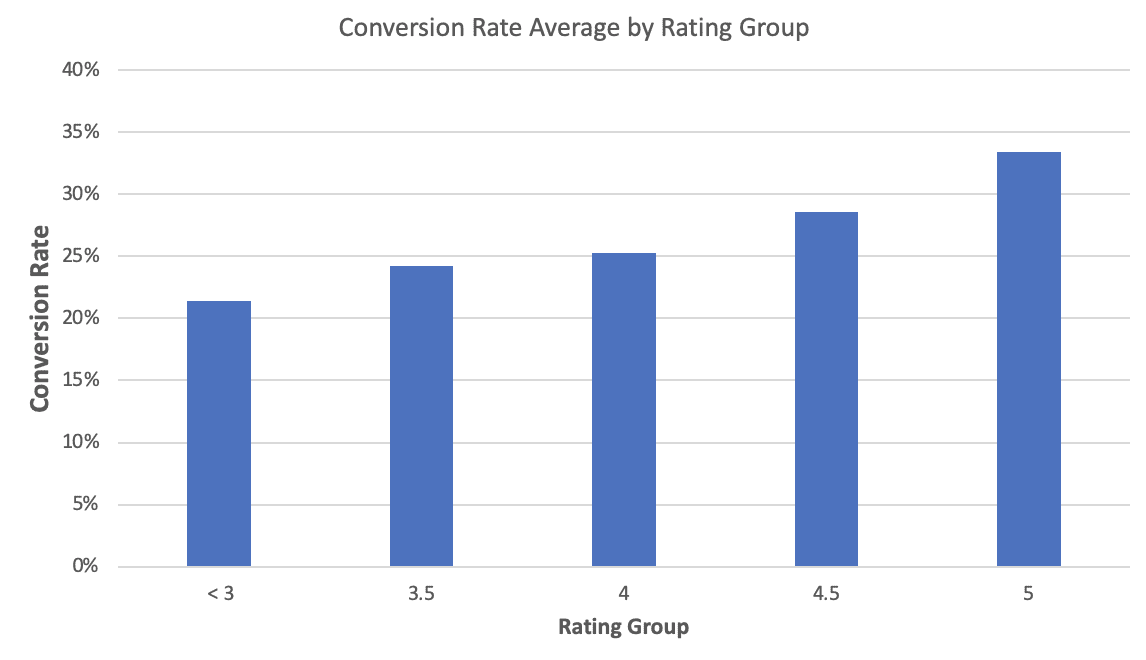 2020 average conversion rate by rating group on Amazon
2020 average conversion rate by rating group on Amazon
The importance of online reviews in the e-commerce industry
First thing first, there is a clear influence of reviews on conversion and sales - the more your product is well-ranked, rated, or well-evaluated by consumers, the more attention and possibly sales it will get. Sales lead to growth, profitability, positive image - or at least for your products or services - and brand awareness.
Second, as an online merchant, possibly in a competitive market, you want your brand to be seen. One of the many things to focus on is your online presence and visibility, especially on search engines (e.g. Google). That’s what is called SEO - Search Engine Optimization. Working on keywords, content, rankings, queries, etc. you probably know all these things already. What might be underestimated, is the power of online reviews on your SEO.
Take Google for instance; its ranking algorithm takes into account different factors. Features like reviews and rates influence your position, provide valuable and relevant information, boost your social media optimization, etc. (learn more here).
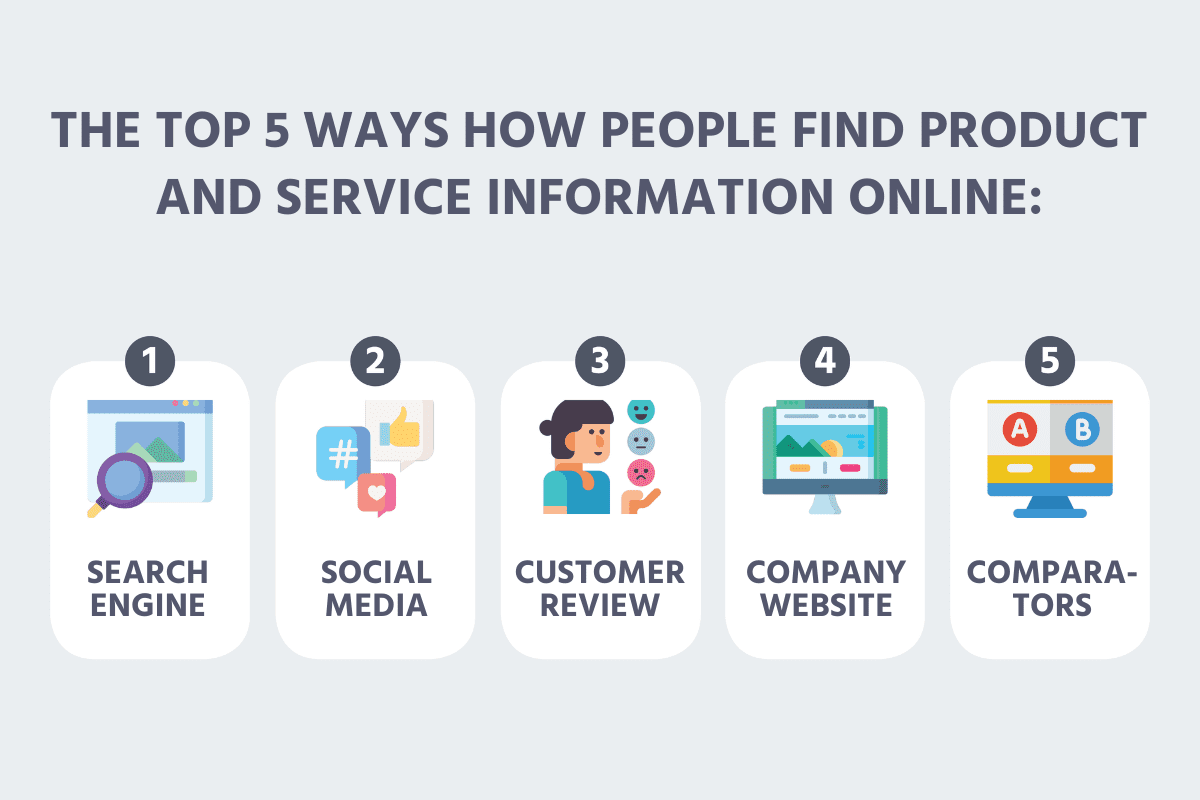
Furthermore, from a paid search perspective (SEA), Google also values (good) ranking in its algorithm, including rates as automatic ads extensions.
Finally, from a product and quality perspective, but also a retailer side, having scores of positive reviews and seeing your customers engaging, is something valuable for you - it’s brand recognition that will drive your business to the top.
The main review platforms
Now that you know how reviews can help your online shop to get more visibility, traffic, and conversion, you probably wonder what service or tool to use. Well, the good news is, there are plenty of them. The bad news is… they are plenty of them. You need a strategy that fits your business model.
As a startup or a small online shop selling on your e-commerce platform, you could begin with reviews on Google My Business, to get initial visibility. Then continue with reviews from social media, to get traffic and round your activities up by adding them on your product pages to improve the conversion rate.
Then, when your company grows, you can start getting reviews from more specialized sites:
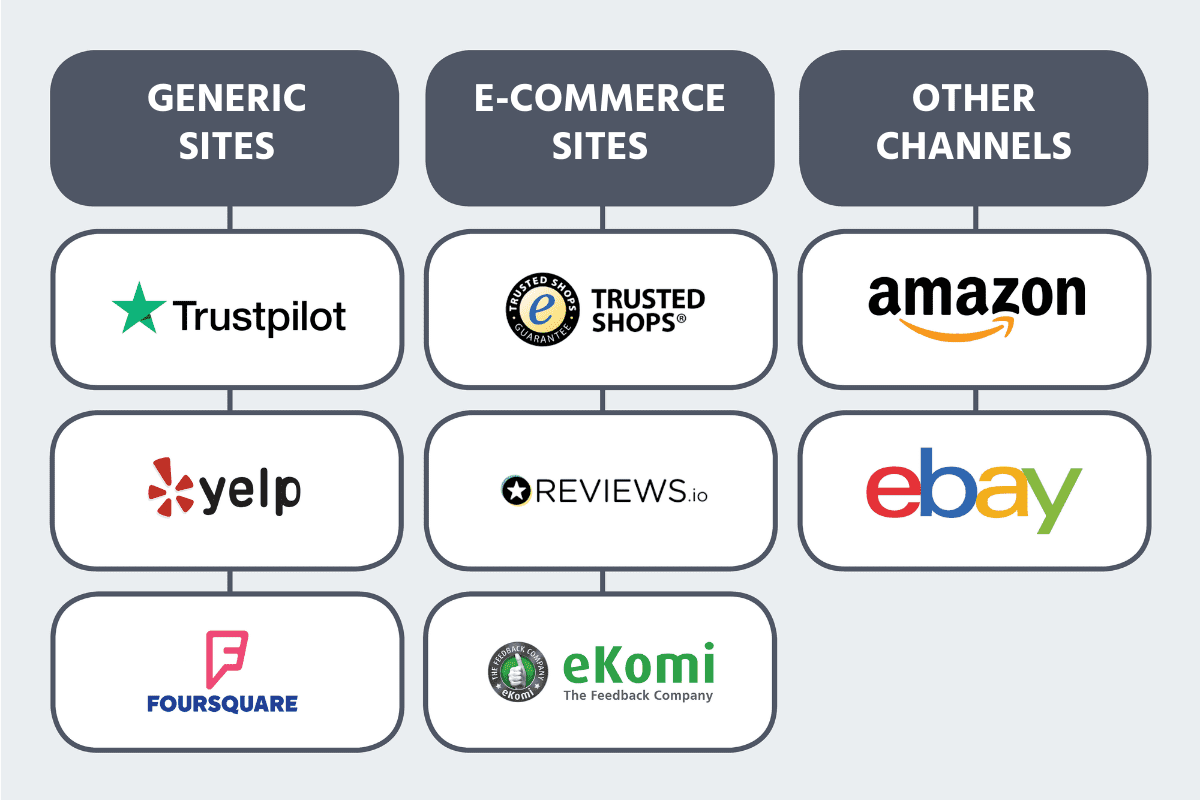
Why handling customer reviews is important
From a general point of view, managing and handling online customer reviews, whether they are negative or positive, allows a business to improve profitability. How so, you are about to ask; by allowing customers to post reviews and then, analyze them. There are 3 important factors you can benefit from as a retailer - you can improve your product or service, make data-based decisions, and lastly, increase your profitability.
Improve your product or service
.png?width=752&name=have-you-been-asked-to-leave-1%20(1).png) How customers react when asked to leave a review
How customers react when asked to leave a review
Make data-based decisions
I’m sure this comes as no surprise to you. Market research, product development, studies, or trials, all of these steps and tools help you as an entrepreneur to build what you think is the best product or service. But nothing can compete against the actual customer experience. By collecting feedback, you have access to clear and usable data directly correlated to the experience. That’s a gold mine!
Increase your profitability
Getting on-field data and improving the customer experience can also be used as a customer-centric approach for strategic communication with your audience, stakeholders, buyers, and/or customers. Customer-centric companies are 60% more profitable than companies driven by other focus.
Employing external or public communication strategies to engage with your audience will render improved brand image and may generate positive word-of-mouth which will lead to more sales, increased satisfaction, and brand loyalty. At the same time, negative reviews and claims that have been (publicly) processed, show care and interest from a brand to its customers.
Furthermore, facilitating internal or corporate communication is also quite important. Having your corporate guidelines and processes to handle customer reviews, will bolster your endeavors to keep the “customer-centric” focus. As such, this is both a management lever and an innovation tool.
However, a survey conducted by TrustPilot highlights a fundamental point; handling customer reviews is important but to minimize the costs of such actions, companies should focus on the extremes. What people pay the most attention to are the most negative and positive reviews (e.g. 1/5 stars and 5/5 stars):
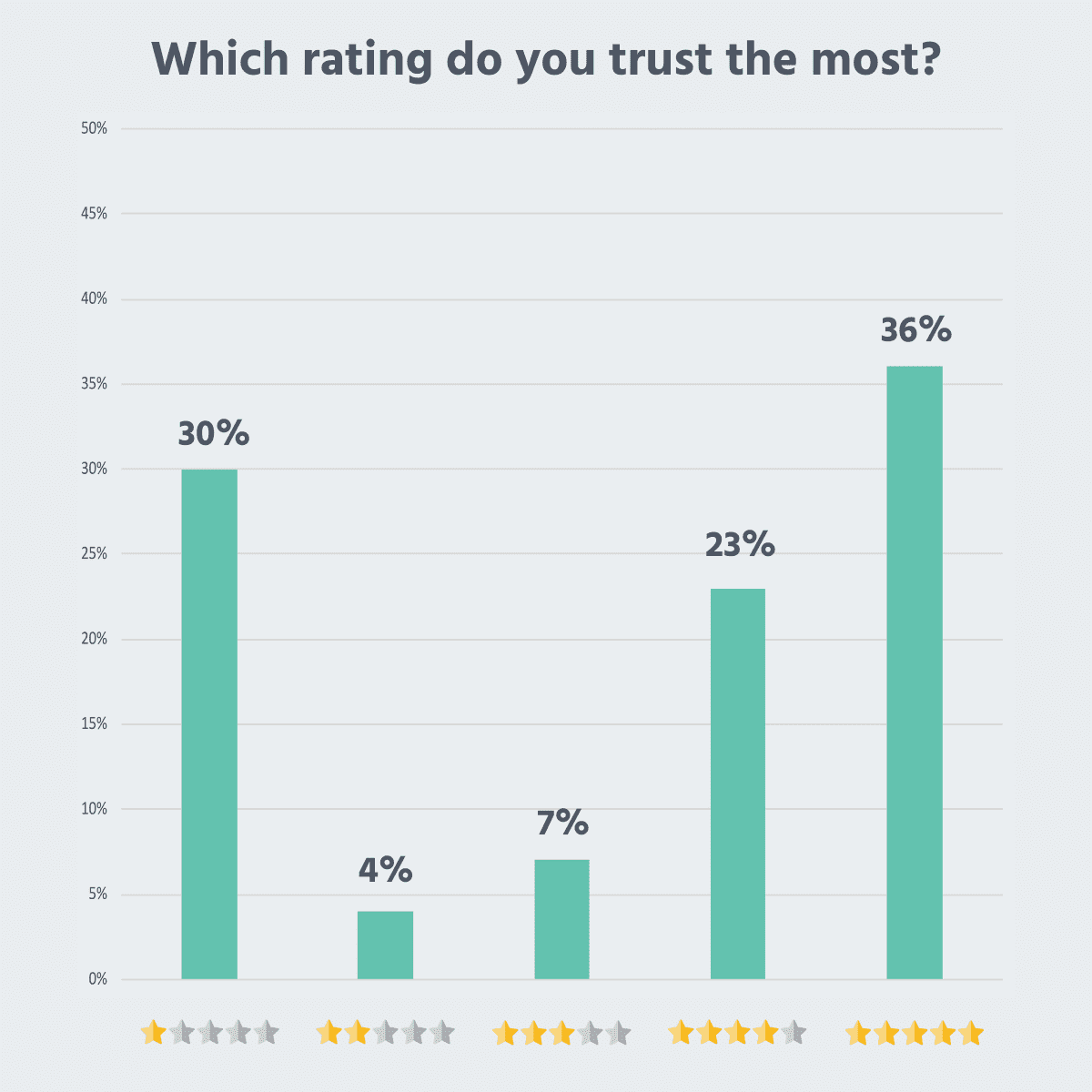
To summarize the importance of handling customer reviews, you have to think in terms of profitability. What to gain: increase trust and loyalty. What to avoid: negative image, revenge, and churn.
Strategies to manage negative reviews and complaints
We have just seen the importance of handling online reviews, both good or bad. As good ones may help your business and brand to grow, negative ones and claims can stifle your growth. Especially when they are frequent and relevant. This is where you need to build up a strategy and actions to manage dissatisfied customers.
The ideal process to handle negative reviews and complains
Yes, we are speaking of a process here. To manage this kind of situation, you need to see the bigger picture. As said in the previous part, handling customer reviews are important. Even more when they tend to “destroy” your online shop. Take that moment, not only as an opportunity to interact with your customer but also as a relationship-building process.
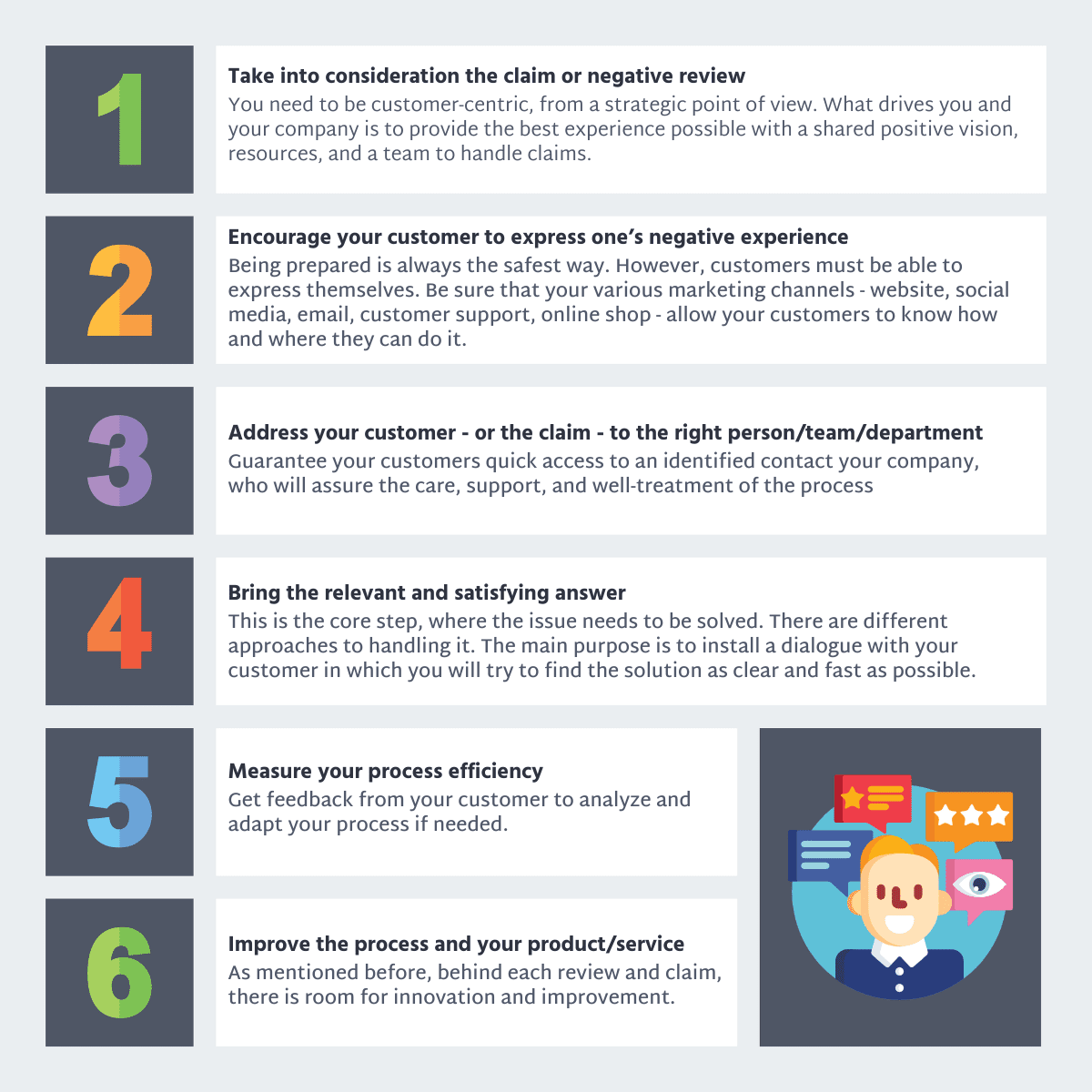
Best practices of online review management
The value-added models and strategies are what we could call, the perfect world, but what about the real one? How do they apply within your e-commerce company? First, let’s have a look at what marketing research says.
We can highlight 3 main points:
- Brands that respond to negative online reviews influence positively long-term customer perception and loyalty
- Customer reviews are even more important when launching new products or for underdog brands
- The more effort a company is making on online review management, the more the customer is willing to stay
Then, how to implement that in your e-commerce company? Here are 2 ideas for you.
Create a proper online process
First, as previously mentioned, you would need to allow your customers to leave reviews, be it on your social media channels, Google, and your product page. Also, consider using a specific review service.
Then, as described in the following video by the online marketing guru, Neil Patel, you should respond to online negative reviews positively, offer explanations and improve your business.
Here are the key elements you should include in a canned response to negative reviews or claims. We would like also to provide you a template that you can use to respond to such negative reviews:

“Dear [name of the customer], thank you for your review and for sharing your feedback. We are sorry to hear that you had a bad experience with our product/service. As you took the time to share your experience which will definitely help us to do better, I would like to take this opportunity to investigate further. Please contact us at [email address] or call our team at [phone number]. In the meantime, my dearest apologies on behalf of [your company name]. Best regards, [your name]”

This is one example of how you can respond to a bad review. Feel free also to include a right and reasoned explanation. Don’t forget also, after taking things offline and resolving the customer issue, to ask for a review update/revision.
Minimize negative experiences by upgrading your logistics process
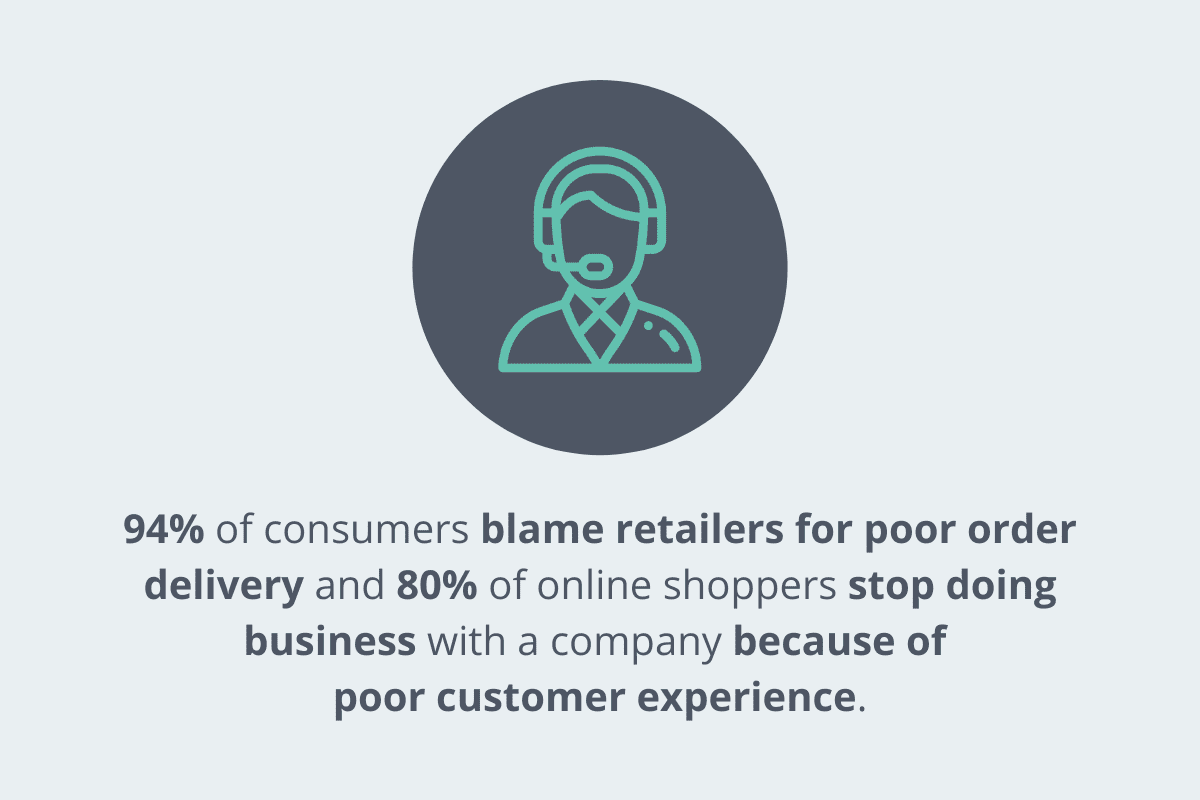
One of the main sources of dissatisfaction when shopping online is often the post-purchase experience, especially the logistics and delivery parts. To improve that, you can work on 2 elements of your order fulfillment.
First, offer various delivery options to cover all risks of price and delivery time negative perceptions. Providing transparent tracking is also a must-have.
People are also more likely to expect their purchase to be delivered in a pick-up station, or at home. You have to cover these expectations to improve satisfaction.
Second, create a solid return management process. One can see a risk when buying online. Not the right color, size, features, etc. That’s why providing a return policy that fits customer needs and expectations is always a plus. For example, use return labels that contain all the information and include it inside the parcel so the customer has just to put the product into a box, stick the label and give it back to the delivery service provider or the post office. In the meantime, you must clearly include information about your return process on your online shop, especially the policy and the deadline (e.g. “free returns within 30 days”).
By reducing potential sources of dissatisfaction in your process and going further with a better customer experience, your e-commerce business will benefit from it as well as your online image.
Conclusion
Management of customer online reviews is quite a recent “science”. With social media and e-commerce growth, it became a key factor for any online retailer and e-commerce companies. If positive reviews will help your online store, you know now that negative reviews will do too.
Apart from handling the product/service improvement part, or the customer care part, you can also improve your whole process, reducing dissatisfaction due to logistics issues, by partnering with an expert in order fulfillment. This solution may help you to save time and cost, and help your business to grow.